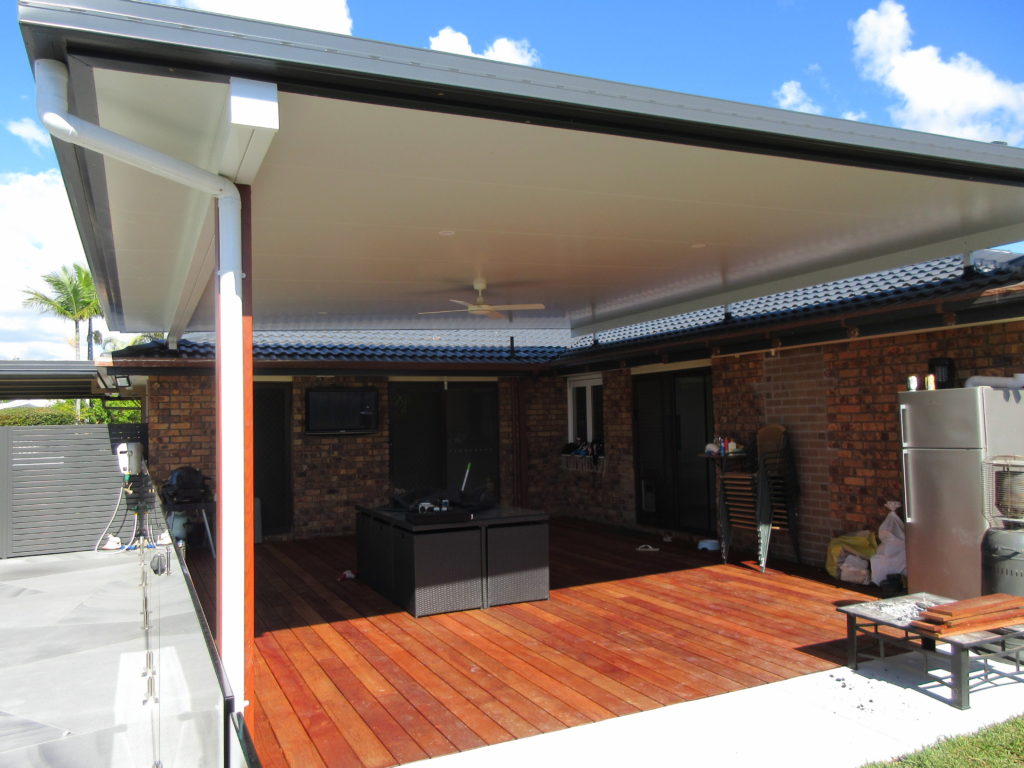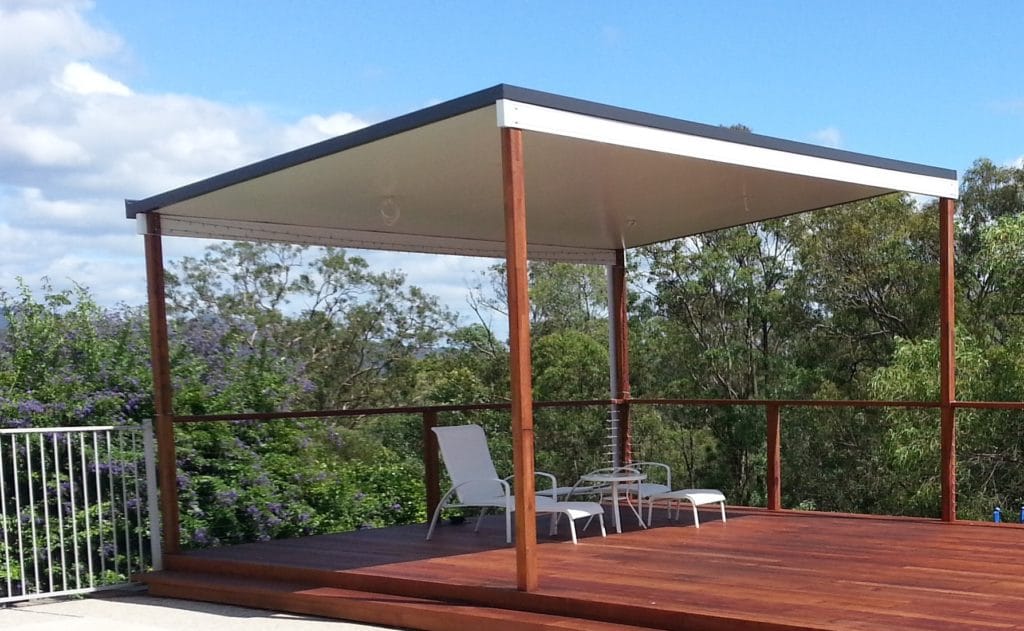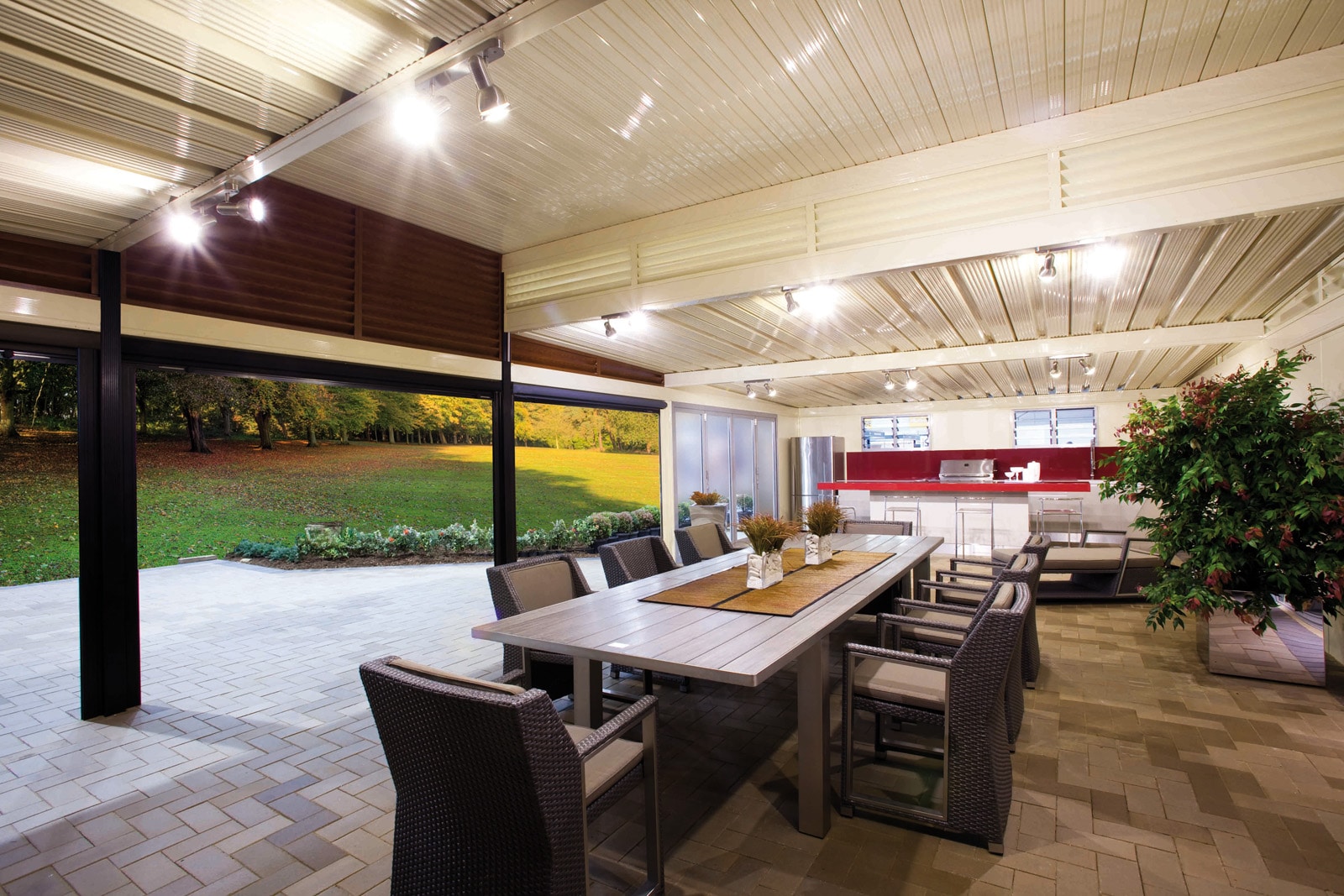Ever looked out at your Gold Coast backyard and thought about how you could make better use of the space? The weather here means we spend plenty of time outside, so maximising your outdoor living areas makes sense. The solution for many homeowners comes in the form of a patio and deck combo. By combining these two popular options, you get the best of both worlds and a flexible space that works for entertaining, relaxing and everything in between.
Combining a patio and deck is like creating the perfect ensemble for your outdoor space. The patio frames your outdoor area and the deck adds that final pop to really make it stand out. But just like any other combination, certain things work, and other things don’t. Read on to learn how to choose the best patio deck combination so you’re not left with two features that just don’t blend.
With the right furniture and accessories, a patio and deck combo becomes a multipurpose outdoor room you’ll use for most of the year. If you’re looking for ways to improve your home and make the most of the Gold Coast lifestyle, a patio and deck combination could be the ultimate solution for your backyard.
Exploring Deck Styles: The Perfect Pairing for Your Patio
Attached Deck – Pairs Well With Flover or Facia Fixed Patio Roofs

An attached deck is a popular choice, securely anchored to your home, often adjacent to rooms like the living room, kitchen, or even a bedroom. These decks typically boast large doors that facilitate easy movement between indoor and outdoor spaces. Their attachment to the house provides excellent shade and weather protection, and you have the flexibility to choose between a flat or elevated design, depending on your landscape.
Detached Island – Pairs Well With Freestanding Patio or Pergolas

The detached island deck stands independently, a bit further from your home, making it a great option for those who want shelter further from their home. It’s a relatively simple and cost-effective design, making it an attractive project for many homeowners. Since it’s not attached to a primary structure, it may be more susceptible to shifting or warping over time due to factors like earth movements or weather conditions. However, it often doesn’t require council approvals, making it suitable for garden settings or tranquil locations. Also known as a floating deck, it can be built at ground level or elevated.
Multi-Level – Pairs Well With Facia Fixed Patio or Gable Patio

The multi-level deck is a design marvel that maximizes vertical space by incorporating smaller, separate decks at varying heights. This style offers more options for relaxation, creating distinct zones for various activities. It’s particularly popular for homes situated on steep hillsides or taller house styles like the Queenslander. While multi-level decks can be a bit pricier, they become a budget-friendly solution for properties with rocky or sloping terrain, as they eliminate the need for costly land leveling to create a flat deck surface.
Deck Materials: Setting the Foundation
Your choice of deck material plays a pivotal role in its durability, appearance, and comfort:
Wood: Pressure-treated wood is a popular, resilient, and cost-effective choice that’s resistant to rot, mould, and harsh weather conditions. It tends to have better heat resistance than stone or concrete.
Hardwoods: These high-end floorboards add undeniable flair to your outdoor area but can be challenging to work with, often requiring professional installation.
Concrete: A concrete-based deck offers design flexibility and easy maintenance. It can be decorated with tiles, stone, mosaics, or staining. However, it can get hot in direct sun and may crack in response to earth movements.
Cobblestones: Rustic cobblestone pavers are unique and aesthetically pleasing, but they can be challenging to elevate. They are also more expensive and labour-intensive to install, making stone tiles a more cost-effective option on a concrete deck.
Choosing Deck Colours and Temperature Control

Selecting the right deck colour is essential to complement your home’s aesthetics and manage temperature:
Complementary Contrast: Opt for a colour that contrasts with your home’s exterior, avoiding an exact match to prevent a monotonous look. For example, pair a dark wood deck with a white house or light stone with a brown brick exterior.
Light vs. Dark: Dark deck colours absorb more heat, so consider shading options, like an insulated patio or a flyover patio with improved airflow, if you choose a darker hue. Insulated patios can also accommodate ceiling fans for additional cooling.
Patio vs. Deck: The Order of Construction
Whether you build your patio or deck first depends on your design preferences:
Patio First: For standard attached or detached island decks, constructing the patio first allows the deck to be seamlessly integrated over the patio bases, creating a unified appearance.
Deck First: If you’re leaning towards an elevated, multi-level deck, having design blueprints ready allows your patio builder to work in harmony with the deck’s dimensions.
Selecting the right deck and patio combination is like crafting a carefully curated ensemble that suits your lifestyle and outdoor space. Consider your landscape, preferences, and budget to create an outdoor retreat that truly complements your home. Contact us today and you’ll soon be enjoying long summer evenings in your dream outdoor space.

